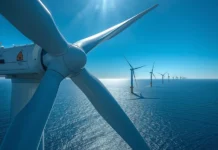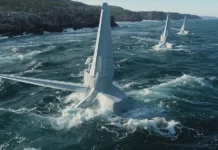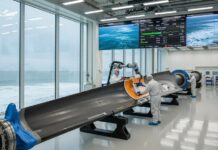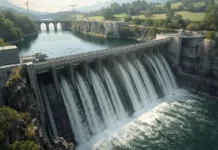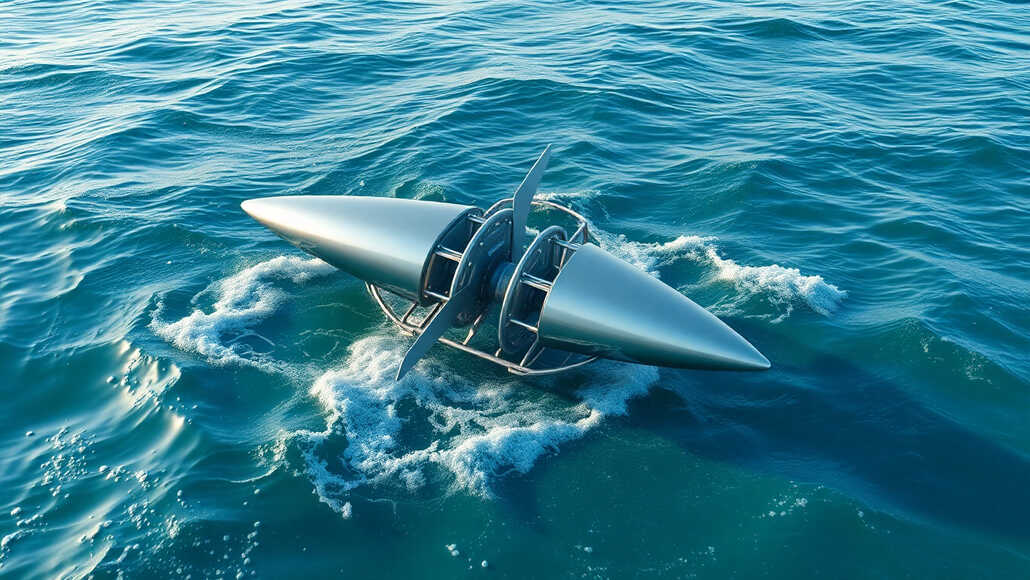The global energy spectrum happens to be on the brink of a transformative shift as nations, along with companies, shift towards innovative renewable energy possibilities. Among these happens to be tidal energy, which has gone on to emerge as one of the most promising yet undiscovered sources of clean energy. Due to its consistent as well as anticipated nature, tidal energy happens to represent a very dependable choice to the intermittent barriers that are faced by solar and wind power. At the heart of this kind of transformation are the next-gen tidal turbines, which are indeed throttling the race in order to establish the first net-zero marine grid in the world.
This kind of an endeavor draws upon cutting-edge technology, rising urgency in order to mitigate climate change, and international collaboration while at the same time addressing the rising demand when it comes to sustainable energy. The marine grid, which happens to be powered by tidal energy, is not a future concept anymore but has quickly gone on to become a tangible reality.
The Tidal Energy Promise
The magnetism of tidal energy happens to lie in its dependability. Unlike solar and wind energy, which go on to fluctuate based on the weather scenarios, tidal energy happens to be governed by the gravitational forces of the moon and the sun. This makes sure of a consistent and dependable energy output, making it a very attractive addition to the portfolio of renewable energy.
The present estimates go on to suggest that the worldwide tidal energy has the potential to go ahead and generate almost 1 terawatt of power every year, which is enough to meet the electricity demands of more than a hundred million households. It is well to be noted that the United Kingdom alone, due to its rich tidal resources, can generate almost 20% of its electricity from this source of energy, therefore underscoring the massive potential it has as a national energy resource.
Although tidal energy has been explored for decades, advancements when it comes to next-gen tidal turbines are indeed unlocking the scalability now. These turbines happen to be engineered in order to withstand any kind of harsh marine scenario, enhance the efficiency, and also decrease the levelized cost of energy (LCOE)—all the barriers that in the past have hindered the large-scale adoption when it comes to tidal power.
Are the next-gen tidal turbines engineering marvels?
It is well to be noted that the development when it comes to next-gen tidal turbines happens to represent the advancement of engineering innovation. These turbines are indeed designed to function in a very diverse marine environment, right from slow-moving tidal streams to high-energy ocean currents.
Apparently, one of the most advanced designs happens to come from Orbital Marine Power, a company that has developed turbines that are capable of generating 2 megawatts of power only from a single floating platform.
These turbines come equipped with smart controls as well as advanced materials, which in a way decrease the maintenance costs and also enhance the lifespan. Their modular designs enable faster and easier installation as well as scalability, thereby making them commercially a very viable source for large-scale projects.
Yet another breakthrough happens to be led by Nova Innovation. Their turbines are designed to function in tidal arrays, which are clusters of turbines working in unison to harness the tidal streams in a more effective and efficient way. These arrays are being tested at the Shetland Islands in Scotland, which is a hotbed for tidal energy innovation.
Unlike the very traditional hydropower dams, the turbines go on to have minimal environmental effect. They are located at the seabed or anchored through a floating platform. They function silently and, at the same time, avoid disrupting the marine ecosystem, hence making them a very critical asset when it comes to achieving net zero emissions.
The first net-zero marine grid—the race to build it
The idea of a net-zero marine grid that is powered completely by tidal energy is no longer a dream. Nations like Canada, the United Kingdom, and France are indeed leading the charge, thereby leveraging their favorable maritime geography in order to establish pilot projects as well as commercial-scale operations.
Scotland’s MeyGen Project is often regarded as a pioneer in the spectrum. This tidal energy farm is situated at the Pentland Firth and has successfully rolled out a series of turbines, which go on to generate electricity for thousands of households. The MeyGen project is backed by government support as well as private investment and is a blueprint for how tidal energy can indeed be scaled. Its success has further throttled investments with plans to expand this project in terms of upgraded capacity by 2030.
As far as Canada is concerned, Nova Scotia, with its Bay of Fundy, happens to be home to some of the world’s most powerful tides, making it a center point for energy innovation.
The Fundy Ocean Research Center for Energy (FORCE) facility has gone on to attract many developers from across the globe who are eager to test their technologies in such a mushrooming energy environment.
In addition to this, France has also made some prominent strides, especially in the Brittany region, where the pilot project looks forward to integrating tidal energy within the national grid. The endeavors are supported by the EU’s Horizon 2020 program, which has gone on to allocate quite a major funding to marine energy projects, thereby further throttling the race to establishing a net-zero marine grid.
How about the economic and environmental effect?
The economic outcomes of next-gen tidal turbines are indeed profound. It is well to be noted that the marine energy sector is anticipated to generate more than $76 billion in investment by the end of this decade by creating numerous jobs across the world. Regions, such as Nova Scotia and Scotland, which are historically regarded as relying on fishing and shipping, are indeed seeing an economic shift as marine energy projects go on to bring high-value jobs along with investments in infrastructure.
When it comes to the environment, the transition to tidal energy can also have a prominent effect on global carbon emissions. Every megawatt hour of electricity that is generated due to tidal energy goes on to prevent almost 500 kg of carbon dioxide from being released into the environment. This translates into unmatched tons of emissions being avoided with time, thereby contributing significantly to global climate objectives.
In addition to this, the localized nature when it comes to tidal energy decreases the transmission losses by making sure that more renewable energy goes on to reach the consumers. All this makes it especially well suited for island nations along with coastal areas where importing energy from centralized hubs can be really expensive and also inefficient too.
What are the challenges and the path forward?
In spite of its promise, the tidal energy sector faces prominent barriers. The high upfront costs that are associated with turbine installation, as well as the intricacies of functioning in marine environments, have gone on to limit its large-scale deployment. Moreover, the regulatory landscape when it comes to marine energy is still taking shape, with developers passing through a labyrinth of permits, stakeholder consultations, and environmental impact evaluations.
But the fact remains that these challenges are being met with solutions that are innovative. Advancements when it comes to digital twin technologies are helping developers to simulate the performance of turbines under numerous conditions, hence reducing the risk as well as optimizing the designs. The public-private collaborations are also playing a very critical role as governments have recognized the strategic value when it comes to investing in marine energy infrastructure.
Going forward, partnerships are going to be key when it comes to overcoming these challenges. Ocean Energy Europe is fostering collaboration between industry, academia, and policymakers to speed up the adoption when it comes to tidal energy. With consistent innovation as well as investment, the dream of meeting net zero marine grid is inevitable.
In the end
The evolution when it comes to next-gen tidal turbines is indeed a turning point as far as the global energy transition spectrum is concerned. By way of harnessing the power of oceans, such engineering marvels are helping the development when it comes to net-zero marine grids, thereby redefining the boundaries of renewable energy.
As the race to construct the first net-zero marine grid goes on to intensify, the blend of technological innovation along with economic opportunity as well as environmental stewardship places tidal energy as one of the world’s most sustainable energy futures. While there are challenges that remain, the growth that has been achieved so far highlights the ingenuity and resilience of this industry, which is dynamic, much like the tides.
In the decades to come, next-gen tidal turbines are not just going to disrupt the energy sector, but they are also going to redefine the relationship of humanity with the oceans.
The fact is that the future, when it comes to energy, not just lies in wind or sun but beneath the waves, where the potential to attain a net-zero world is vast but still untapped.









